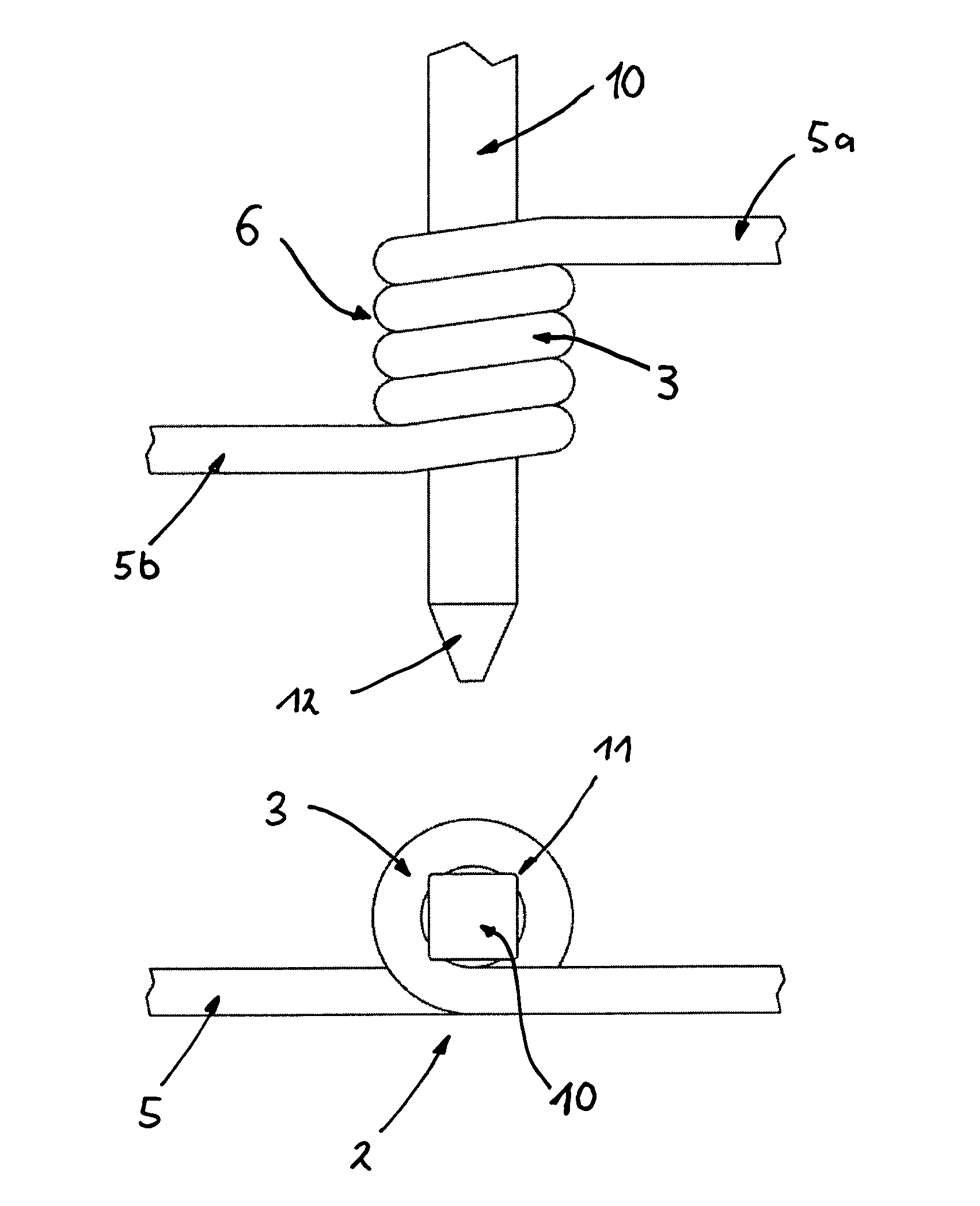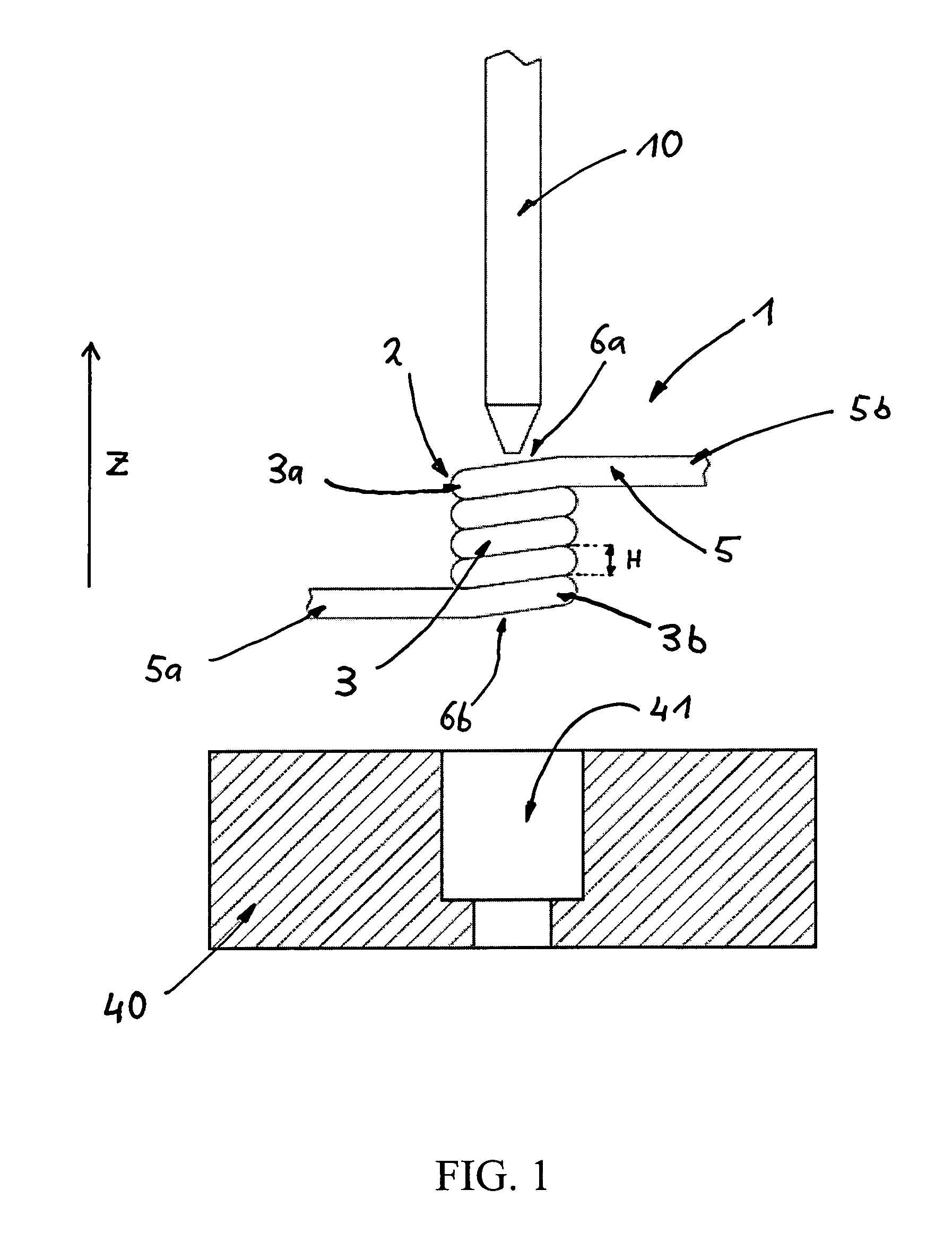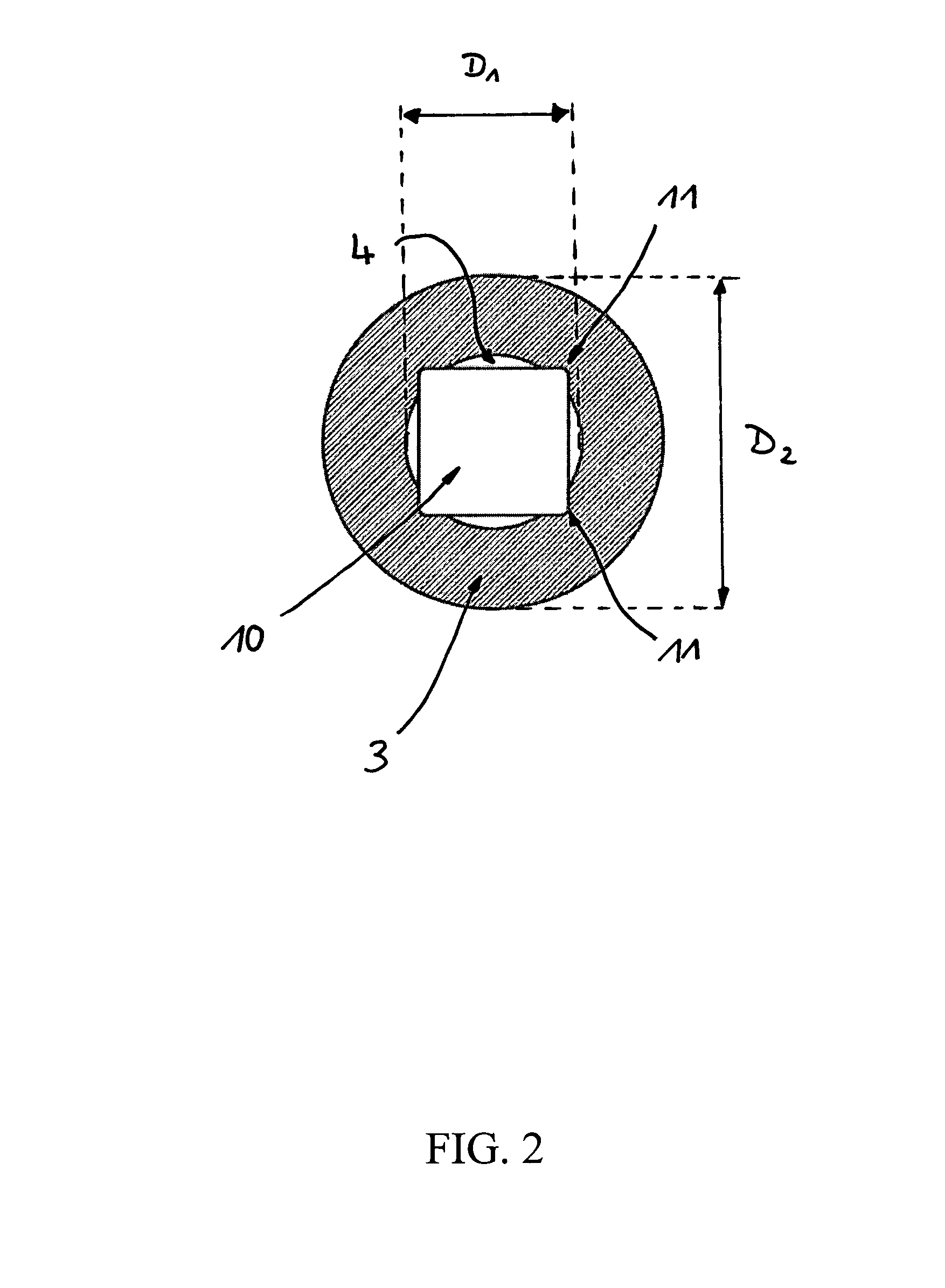Electrical contact element
- Summary
- Abstract
- Description
- Claims
- Application Information
AI Technical Summary
Problems solved by technology
Method used
Image
Examples
Example
[0032]FIG. 1 is a side view of a first embodiment of a contact element 1 having a connector pin 10 arranged thereabove in the unconnected state above a component support 40 having a receiving opening 41. The contact element 1 has a contact part 2 wound from wire 5, which contact part forms a substantially cylindrical contact-receiving space 4 which is open on both sides. The contact-receiving space 4 therefore has an upper opening 6a and a lower opening 6b which are formed and limited by the uppermost and lowermost turn of wire 3a, 3b respectively.
[0033]The present embodiment shows a contact part 2 wound from four complete turns of wire 3, 3a, 3b, which contact part is wound helically from wire. The contact part 2 has a pitch H, the pitch H representing the distance by which the helix winds upwards (in the cylinder axis direction Z) in one complete rotation of the wire 5. If the pitch H corresponds to the wire diameter DWIRE, each two adjacent turns of wire 3, 3a, 3b, as shown in FI...
PUM
 Login to View More
Login to View More Abstract
Description
Claims
Application Information
 Login to View More
Login to View More - R&D
- Intellectual Property
- Life Sciences
- Materials
- Tech Scout
- Unparalleled Data Quality
- Higher Quality Content
- 60% Fewer Hallucinations
Browse by: Latest US Patents, China's latest patents, Technical Efficacy Thesaurus, Application Domain, Technology Topic, Popular Technical Reports.
© 2025 PatSnap. All rights reserved.Legal|Privacy policy|Modern Slavery Act Transparency Statement|Sitemap|About US| Contact US: help@patsnap.com



